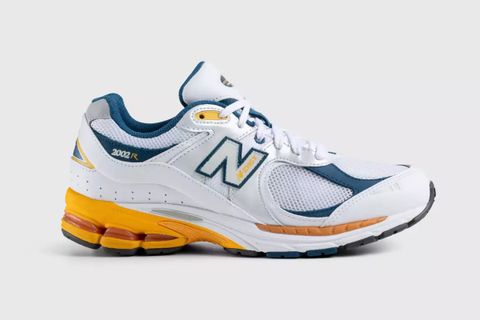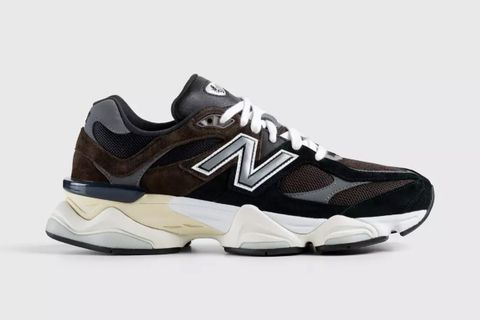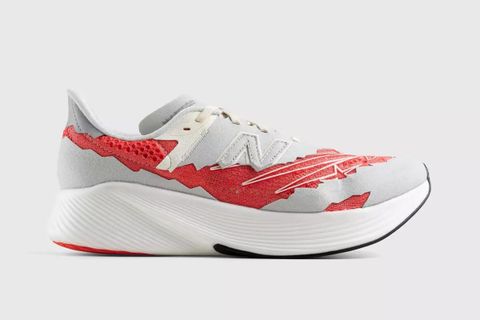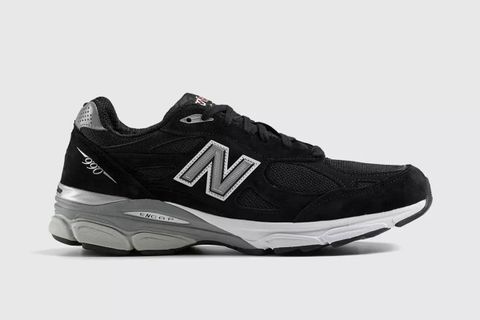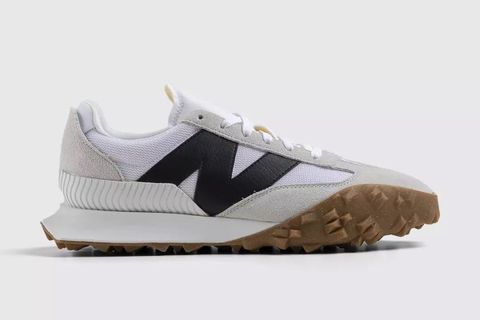Here’s Why New Balance Is Dominating Right Now
In an era that has belonged to sportswear giants Nike and adidas, New Balance has emerged as a leader in the cultural zeitgeist. The brand never set out to be a part of hype culture, but that, ironically, is what has positioned them as one of the most hyped brands in the market right now.
This past June, New Balance cemented its dominance during Men’s Fashion Week Spring/Summer 2023. Auralee and Mowalola debuted unique renditions of the RC30 and 90/60 models, respectively. So far, the brand has dropped collabs at a blistering pace with the year’s standouts being the Donald Glover RC30, Joe Fresh Goods 9060/550, Staud XC-72, Thisisneverthat 1906R/2002R, Aimé Leon Dore 991, and Salehe Bembury’s 990v2.
In an interview with GQ, Sally Scott, CEO of global sneaker resale site Klekt, said, “Over the past 12 to 18 months New Balance has become the new go-to sneaker for both the sneakerheads and the general consumer alike," which has resulted in sales rising by over 100 percent since 2021.
So, what's led to this drastic rise?
To start, credit must be given to the brand’s laser focus on the product, above all else.
New Balance was founded with the sole goal of providing exceptional footwear to customers and that goal has remained the same, from the materials used all the way to the technical support found within the products. While sneaker culture often demands newer, louder, or more visibly touted innovative products, NB has elected to hunker down on core offerings (99x and 574) while sprinkling in modern reinterpretations of classics (327, XC-72).
Australian sneaker collector and expert Lucas Blackman says, “The brand has always provided quality craftsmanship with special attention to detail. They haven’t swayed from their product-first focus which has become more relevant as other brands’ quality continues to decline.”
That attention to detail also informs another important component — wider accessibility without the deterioration of quality from product to product. Classic styles are still easily accessible to the average consumer and the craftsmanship remains virtually the same regardless of the model, with many of the in-line sneaker colorways garnering as much intrigue, in their own rights, as collaboration models.
On the global scale, supply chain issues caused by the pandemic have resulted in an increasingly scarce product supply for nearly everyone. This, in a way, has worked to the brands’ favor, as forced limited supply and delays have led to an increase in demand.
Shop Our Selection
“Supply and demand have a big part to play as well in their ascension. The effect of the pandemic delays has resulted in slow and limited releases — a sure-fire way to amass hype, especially for a quality sneaker,” says Blackman.
But, even with the limited supply, the aftermarket pricing for most New Balance collaborations is not nearly as heavy a load to bear as a missed Nike or adidas collab.
Alongside those foundational pillars, the bulk of work, at least from a perception standpoint, has come from the brand’s partnership strategy, ranging from seeding key public endorsers to niche brand collaborators, all the way to the diverse retail partners.
Over the past two years, the brand’s silhouettes have been frequently donned by an increasing number of marquee celebrities like Gigi Hadid, Timothée Chalamet, Zoë Kravitz, and Chris Pine (along with so many others). All being responsible for placing New Balance in the public eye and captivating the hearts of mainstream culture.
Simultaneously, the brand’s collaborations have gotten more globally diverse, with strategic local partnerships. All of these collabs serve a specific function from a storytelling or amplification perspective and capture influential niche markets around the world. Furthermore, many of them have been used to not only debut new silhouettes, but also relaunch archival models. Take the impact of Aimé Leon Dore on the resurgence of the 550s/650R, Stray Rats’ amplification of the 827s, and the partnership with Casablanca to debut new models in the 327s and XC-72, for example.
Another key success element for the brand is leaning into ambassadors and key cultural tastemakers, which it had been hesitant to do for some time, a major resulting advantage from years of experience watching competitors’ influencer strategies fail or succeed (The New Balance ambassador list includes icons like Sadio Mane, Jack Harlow, and Kawhi Leonard, to name a few).
One of the most notable internal decisions during New Balance’s run for the last two years was the hiring of Aime Leon Dore’s Teddy Santis to lead the Made in USA division of the company. It made all too much sense with the amount of influence his brand had generated among streetwear and New Balance enthusiasts.
Blackman notes, “They tapped the NOS button with [Santis], a new pioneer for the sophisticated streetwear look, and have blasted away from a majority of the competition as a result.” This truly has been the year of Santis, as he has placed his creative stamp on a number of modern colorways that have entered the market (574s, 990v2, and 990v3). His attention to detail matches the ethos of the brand, resulting in more aesthetic refinement and cultural energy around important classics.
Joe Grondin, NB’s Business Unit Manager for Global Collaborations & Energy, adds, “Our unique approach to relationship building has resulted in long-term partnerships with an immense amount of trust on both sides. We’ve allowed our partners to really express themselves creatively and build their own worlds within the NB universe. These relationships play a pivotal role in our current strategy as they have generated a new level of engagement towards the brand over the past few years.”
The brand has indeed mastered how to serve both core and new audiences by doubling down on its quality and utilizing partnerships to reach niche and diverse segments, resulting in an increase in relevance to the modern consumer. There is no disputing that New Balance is certainly dominating right now.

